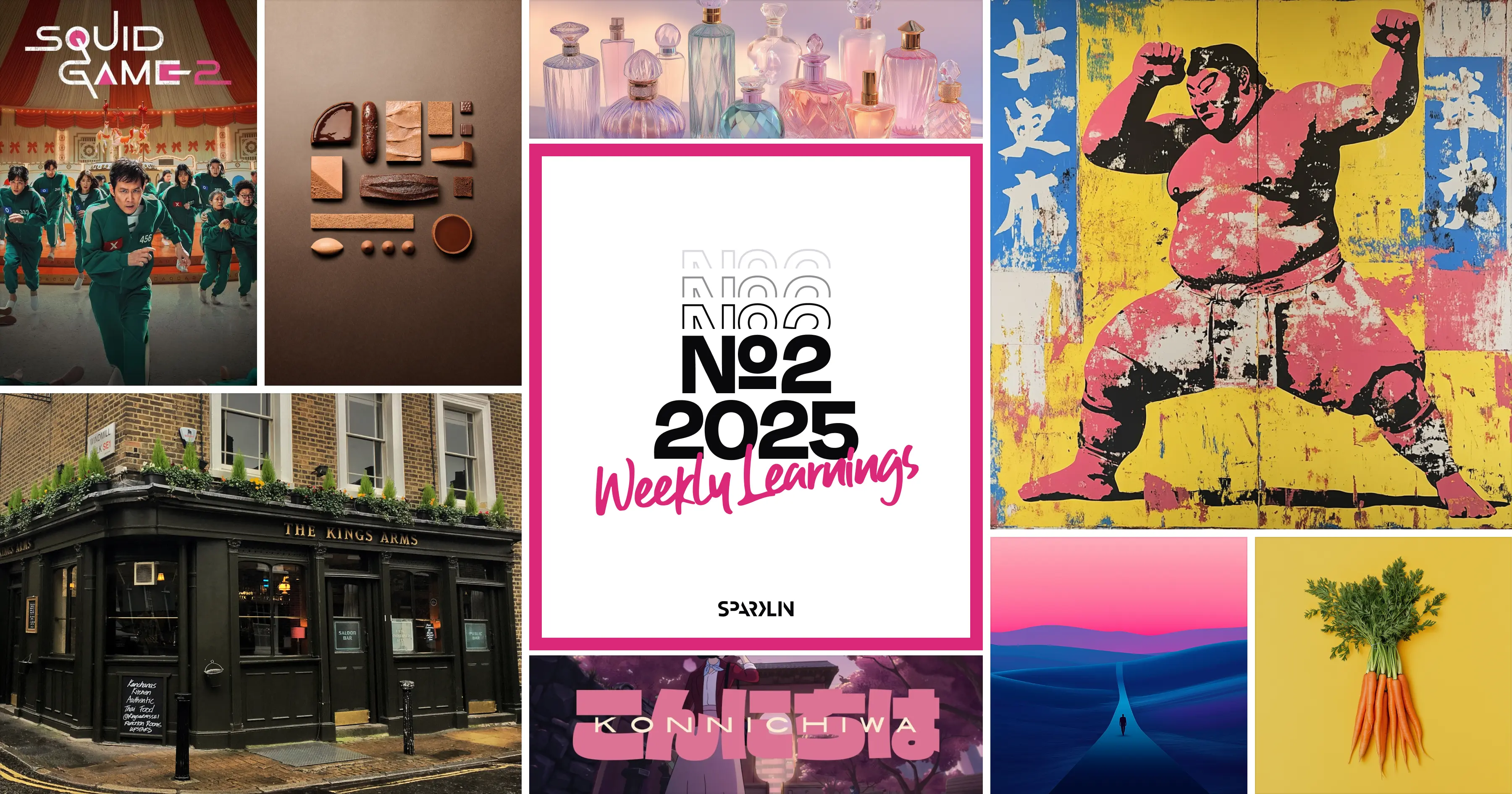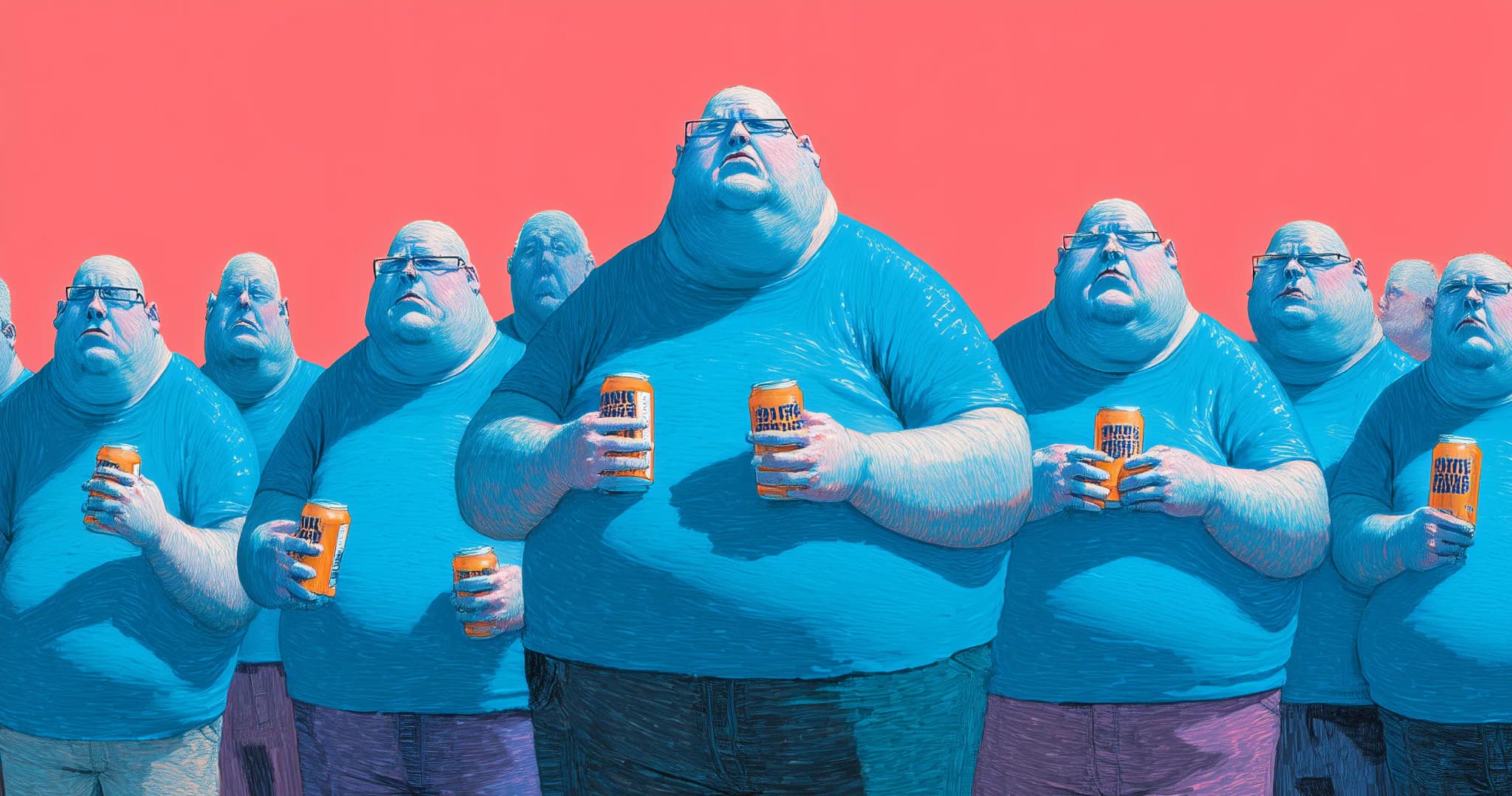From the strange and amusing origins of English pub names to the sacred rituals of sumo wrestling, the world around us is filled with wonders. Ever heard of decision fatigue or wondered about the world of luxury food branding?
There's so much more inside. Let’s dive in!
Quote of the week:
"He knows you’re a flower. There’s a bee on you.”
— Thanos the Great aka Mr. Shaky Hands (Player 230).
1. Decision Fatigue
Pratyush learned about a psychological phenomenon surrounding a person’s ability or capacity to make decisions called Decision Fatigue or Ego Depletion.
Decision fatigue occurs when the mental energy required to make decisions is depleted, leading to reduced decision quality and efficiency. It often results from making numerous decisions in a short period, leaving the brain less capable of weighing options and making sound choices.
Read more about this on Medical News Today.
2. The Weird English Pubs
Mayank discovered that English pubs are renowned for their quirky and imaginative names, such as "King's Arms," "Bear," and "Fish." This tradition, which dates back to the 12th century, has an intriguing history rooted in the era’s literacy challenges.
At that time, approximately 70% of the English population was illiterate, making it difficult for them to read or write. To address this, pub owners used symbols for their establishments, which could easily be turned into recognizable monograms.
These visual markers made it simpler for patrons to identify pubs, kick-starting a tradition of distinctive and memorable pub names that continues to this day.
3. Sumo Wrestling and Entertainment
Ishant learned that sumo wrestling originated as a Shinto ritual designed to entertain the gods, with the belief that their satisfaction would ensure a bountiful harvest. The sumo stage, or dohyo, holds significant sacred value. Its design includes a roof adorned with purple curtains and tassels, symbolizing the roof of a Shinto shrine.
This spiritual connection emphasizes the ritualistic and cultural importance of sumo beyond its status as a sport.
Read more about this on Sumo Talk.
4. Burnout is Real
"Burnout feels like a living centre absence, not only of a centre, but the sources that used to rise from that centre"
— David Whyte
Sakshi's take: Burnout is like forgetting that inner spark that used to fuel us. It's not just losing sight of what truly matters to us but also feeling disconnected from the energy we once had. That energy seemed endless, carrying us through every phase of life. When we burn out, it's as if we've lost faith in ourselves, unable to remember that the source of our strength was always within us—and doubting if we'll ever tap into it again.
5. Whacky UI Elements
Omkar, tired of the repetitive and uniform UI elements that dominate most websites, embarked on a mission to find something more lively and engaging. This quest led him to discover Fancy Components, a project that celebrates the weird, the wonderful, and the wildly imaginative aspects of web design. By gathering an eclectic mix of playful, quirky, and sometimes downright peculiar UI elements from around the internet, Fancy Components aims to spark creativity and bring a sense of fun back to digital interactions.
6. Luxury Food Branding
Shreshtha dove into the world of luxury and branding. Luxury food branding revolves around the art of storytelling—blending authenticity, sustainability, and craftsmanship to transform simple bites into unforgettable experiences. She found out about brands like Petrossian, renowned for its century-old caviar legacy, and Valrhona, celebrated for its bean-to-bar transparency in chocolate making. These brands weave heritage and eco-consciousness into their products, creating a narrative that elevates their offerings beyond mere taste. Icons like Dom Pérignon and Illy Coffee exemplify how true luxury lies in harmonizing artistry with sustainability.
The essence? It’s not just about the flavor—it’s about the journey, the dedication, and the story behind every bite or sip.
7. The database of smelling good
Sneha came across a fascinating graphic that charts the popularity of different perfume notes from 1980 to 2024. The data comes from the Parfumo database, a treasure trove for stats enthusiasts like Fitz Chao Li, who created the graphic, and perfume history fans.
The chart is divided into three parts:
- Core notes: The most common, forming the backbone of most perfumes of the time.
- Modifiers: Middle-tier notes that rise and fall with trends.
- Grace notes: Rare and unique notes, added for a creative twist.

In the four years before 2019, the graph shows 65 movements. During the global lockdown in 2020, this dropped to 10. In the four years after COVID, movements nearly halved to 35.
8. Carrot and Stick
Atul explored the concept of motivation, contrasting two approaches: the "carrot" (positive reinforcement) and the "stick" (punishment or fear of failure). These methods influence human behavior, decision-making, and long-term results, noting that while carrots can inspire creativity and engagement, sticks may produce short-term compliance but can lead to fear and resentment.
Travel Bug:
- Kongthong village in the East Khasi Hills district of Meghalaya, India is known as the Whistling Village. The village is famous for its tradition of assigning each resident a unique whistle tune as their name.
- Romania is now a part of Schengen. And a dog was the first living being to cross the Romanian border without a visa (officially).
- Thai name for Bangkok is Krung Thep Maha Nakhon, which translates to Great City of Angels.
- The Eiffel Tower was once yellow. At its unveiling in 1889, the Eiffel Tower had a reddish-brown hue. After about 10 years of mixed reviews, Paris coated the tower in yellow, which kind of turned back into yellow-brown after a while.
- The longest name of a place in the world is "Llanfairpwllgwyngyllgogerychwyrndrobwllllantysiliogogogoch.” No, it’s not your cat running over your keyboard. Yes, it is a village in Wales.

That’s a wrap on Weekly Learnings this week ✨
We’ll keep learning, keep growing, and perhaps make the coming week even better. Got thoughts, questions, or insights of your own to share? We’d love to hear them—drop us a hello at hello@sparklin.com and join the conversation.



